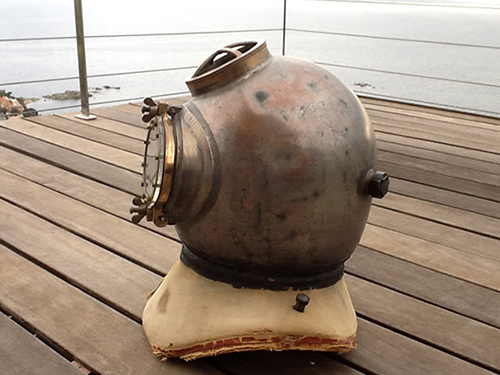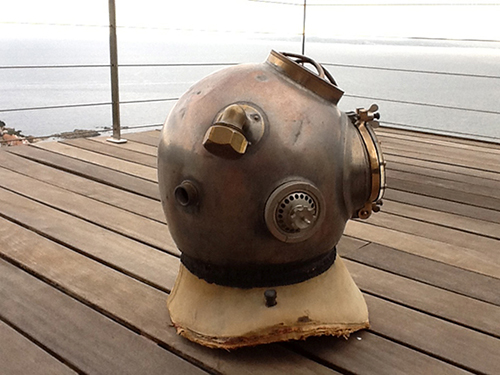


This is a
Mine Recovery helmet. It used to be tinned, the previous owner had it
removed and had the helmet polished........
At the rear you see the 2 connections for the CO2 scrubbing cannister. At
the side are the telephone connection and the unusual exhaust.
These helmets were worn with a 2 piece suit. Trousers with as rubber band
around the waist and a jacket with the same rubber band, worn over the
rubber band of the trousers. The jacket was glued over the breastplate so
the diver entered the jacket and immediately had the helmet, all in one
piece, on his head.
Notice the hinged front window.
Photo courtesy by our friend Rob Krul.







